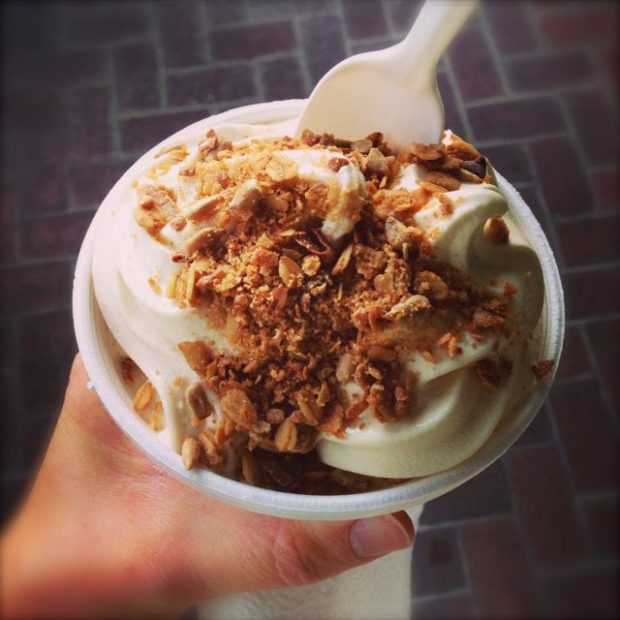Some foods are often toted as healthy, but may actually be more likely to cause weight gain than weight loss, because of their high calorie content. Read on, to make sure you’re not falling victim to these traps!
- Smoothies. Enormous smoothies packed with sugar and calories are the name of the game at smoothie shops like Jamba Juice, Robek’s, Smoothie King, etc. What to do: Ask to see nutrition facts, pick the smallest size, and order the kinds that are made with plain yogurt and nonfat milk (rather than sherbet, frozen yogurt, and juice, which are all packed with sugar). Or even better, make smoothies like these at home, so you can control the ingredients.
- Yogurt. It’s one of the world’s healthiest foods, but many “yogurts” on the market these days are essentially liquid candy. Some have 3-4 times the sugar of a bowl of ice cream! What to do: To find out which yogurts are best, visit my yogurt post. Greek yogurt (plain) is also a good bet, as is this new delicious variety.
- Granola. In theory, granola is healthy, because it’s made of whole grains and nuts. But most commercial (and even homemade) granolas are loaded with sugar/maple syrup/honey, oil or butter, and huge amounts of nuts and seeds, which are fine in moderation, but very high in fat and calories. What to do: Eat granola in small portions (e.g. sprinkle 2-3 Tbsp on a bowl of plain yogurt with fruit) so you limit calories, and/or try making your own lower-calorie version.
- Soft-serve frozen yogurt. Pinkberry, Yogurtland, TCBY, Tutti Frutti and Menchie’s are just a few of the popular yogurt chains these days. While this is a better dessert choice than others, the serving sizes are often gigantic, which can mean your 150-calorie treat has quickly turned into a 500-calorie treat. What to do: Limit your serving to 8-oz, either by requesting a smaller amount, ordering a kids-size cup, or filling a large cup only part way. And take it easy on the toppings, which can add loads of calories and fat.
- Fat-free, Low-Fat, and Light snack foods. Low-fat graham crackers are essentially the same as regular, but the fact that they say low-fat may cause you to eat more of them, according to research. Most low-fat or Light snack foods are also about the same calorie-wise as the regular versions, even if they are lower in fat or sugar, so switching to these products won’t help your diet any. What to do: When it comes to snack foods, examine the Nutrition Facts Label to compare calories — if there’s little or no difference, go for the regular variety and keep your portions moderate.





No Comments